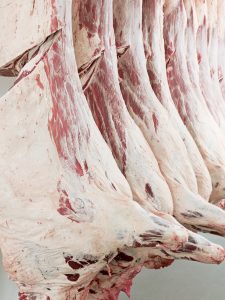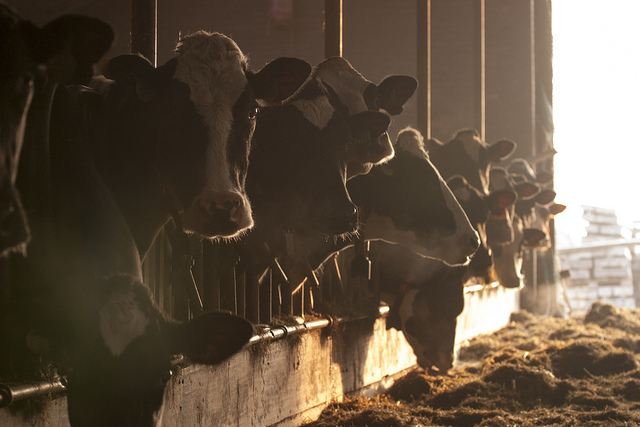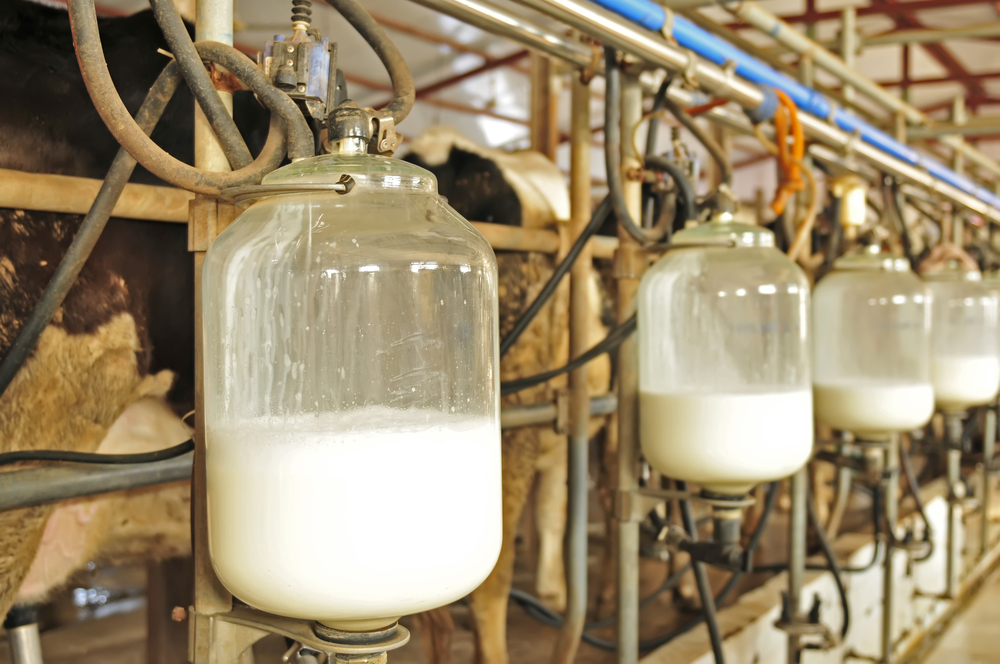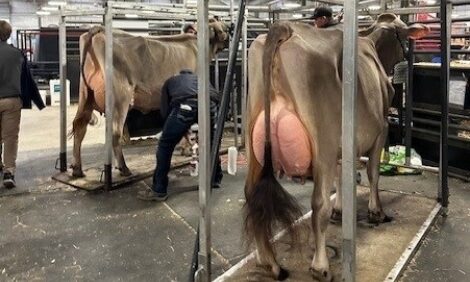



Weekly beef and dairy digest: global beef outlook is revised lower and Belarus emerges as a key dairy exporter
Global beef production is expected to contract by 1% in 2021 as export markets are restricted and cattle herds grow smaller.News from the global beef sector
USDA sees lower global beef output for 2021
The US Department of Agriculture this week said in its monthly supply and demand report that global beef production for 2021 is revised 1% lower from the April forecast, to 60.8 million tonnes, driven by declines in Argentina, Australia and Brazil.
Argentina is tackling high beef prices by restricting exports to bolster domestic supplies, a move that will lower prices and curb incentives to further market cattle. Meanwhile, Australia production is expected to fall to a 23-year-low due to rebuilding of its national herd. In Brazil, soft domestic demand and high production costs are squeezing packers’ margins, which are expected to result in lower incentives to slaughter cattle during the year.
Global beef exports for 2021 are seen down 3% to 10.8 million tonnes as declines in Argentina, Australia, and Brazil more than offset gains in the United States, Canada, and New Zealand. Global
imports are down 1%. Although demand for beef in Asia is expected to remain strong, tighter global exportable supplies are expected to slow beef imports by China and Hong Kong.

Weekly beef exports sales from the US disappoint
US beef net sales of 9,300 metric tonnes (MT) reported for 2021 were down 61% from the previous week and 44% from the prior four-week average. Increases primarily for Japan (3,000 MT, including decreases of 700 MT), Mexico (1,800 MT), China (1,600 MT, including decreases of 100 MT), Taiwan (700 MT, including decreases of 200 MT), and South Korea (600 MT, including decreases of 700 MT), were offset by reductions for Indonesia (100 MT).
Exports of 15,500 MT were down 13% from the previous week and 15% from the prior four-week average. The destinations were primarily to Japan (4,100 MT), South Korea (3,800 MT), China (3,300 MT), Taiwan (1,100 MT), and Mexico (1,000 MT).
Argentina beef exports drop 6.6% from year-ago
Argentina exported 55,700 MT of beef during May, a 6.6% slide from the year prior given a suspension on shipments from 20 May forward, the country’s CICCRA meat industry chamber said in a report.
The Argentine government has since restored exports through year-end, but only at 50% of last year’s average export pace as the country works to curb prices and ensure adequate domestic supplies this election year. Argentina is the world’s fifth largest beef supplier, with China as its main market. CICCRA reports 77.5% of Argentina’s beef exports between January and May went to China.
News on Europe's dairy industry
Western European overview
Sources in Germany and France, the largest milk producing countries in Western Europe, have noted than the seasonal decline in milk production seems to have increased. Hot weather is cited. At the end of June anecdotal early reporting pegs the average weekly decline in Germany as -1.5%. That was about 1.5% below 2020 YOY for the week. With the first half of 2021 behind us, sources in Western Europe now expect 2021 milk production to end the year up about 0.8% from 2020 milk production.
Eastern European overview
Belarus continues to be a significant dairy product exporter in Eastern Europe according to sources. Russia is reported to remain a primary export destination, particularly for cheese and butter. China has been increasing dairy product sourcing from Belarus, especially SMP. May 2021 exports of butter, SMP and WMP were noted to be higher than May 2020.

USDA’s weekly dairy report
Cheese highlights
Cheese sales have picked up in the Eastern and Midwestern regions, while Asian exports continue to keep Western producers busy. Milk remains widely available for Class III production nationwide. Spot milk prices in the Midwest ranged from $6 to $4 under Class.
In comparison to the past two years, prices are higher on average. In fact, in 2019 and 2020, during week 27, prices reached or exceeded flat Class. Cheese supplies are mixed from balanced to tighter, week to week. Production has been very busy. That said, labor and staffing shortages are, and have been, a growing concern for cheese plant management. Cheese market tones have found some inspiration following the holiday weekend.
Butter highlights
Cream availability is beginning to tighten. Some manufacturers paused production Monday 12 July for the holiday, but butter makers maintained typical seasonal levels of operation the rest of the week. Some contacts note an increase in micro -fixing in preparation for tighter cream supplies.
Inventories are stable to growing, and butter is available for current spot and contract needs. Retail sales are somewhat mixed, and many grocers are running weekly butter promotions. Contacts note some variation from week to week, but food service demand is leveling off as many eateries and institutions have refilled pipelines. Butter market tones are quiet. This week, bulk butter overages range from flat to 8.0 cents above market across the country.

Fluid milk
Milk production is seasonally declining in most areas. California and Pacific Northwest milk yields are lower than had been forecast. Bottling orders are flat to lower across most of the West, but demands for Class II and III milk are steady to higher.
Arizona dairy processors are moving milk from other states to maintain supplies for manufacturing needs. Midwest milk production each month has exceeded production for the same month in 2020. Class I orders are seasonally decreased. Cheese manufacturers are not snapping up discounted milk as eagerly as in the past weeks, even at prices $6 to $4 under class. Northeast milk is seasonally heavy.
Bottling orders are lower, and balancing plants are active. Tropical Storm Elsa has caused some eastern flooding, slowing transportation in some cases. Condensed skim supplies are meeting current demand. Cream supplies are reportedly mixed, but availability is trending tighter. However, some contacts say demand is also slightly lower due to modified holiday production schedules this week. FOB cream multiples are 1.29-1.35 in the East, 1.23-1.34 in the Midwest, and 1.05- 1.30 in the West.
.jpg)
Dry products
The Central and East low/medium heat non-fat dry milk (NDM) price range and mostly shifted down. The West low/ medium heat NDM price range narrowed, and the top of the mostly held steady while the bottom decreased. Interest, in both domestic and export markets, is mixed. High heat NDM prices are unchanged in the Central and East, but the West range tightened. Contacts indicate demand varies between regions, while high heat NDM production is active and availability is growing.
The top of the dry buttermilk price range ticked down in the Central and East, and the West price range expanded. Dry buttermilk trading was steady to slower this week. Condensed buttermilk trading is more active, as ice cream makers are clearing much of the available supply. The dry whole milk price range is unchanged this week, and trading was quiet. Inventories are balanced to tight, depending on the specifications of the end user. Dry whey prices are mixed.
Domestic and international demands vary, and so do production schedules. Some inventories are increasing. The bottom of the whey protein concentrate (WPC) 34% price range inched up. Contacts say demand for some brands is higher than others, and some of the more select brands have highly committed inventories. Production is lower as some manufacturers have shifted focus to WPC 80% or whey protein isolate.

The lactose price range is unchanged, although the bottom of the mostly increased. Contract agreements are in place for Q3. Some manufacturers report challenges navigating shipping equipment shortages and shipping channel delays to move Q2- committed lactose. Acid casein prices decreased while rennet casein prices increased.
National retail report
The most advertised conventional dairy item this week is 48 to 64-ounce containers of ice cream. Ad numbers decreased 10% from last week. The national weighted average price is $2.79, down $0.17 from last week. Conventional 16 oz. cottage cheese has an average price of $2.04, up $0.18 from last week.
The weighted average advertised price for conventional 8-ounce shred cheese is $2.33, up $0.05 from last week. This is the most advertised conventional cheese category. Conventional dairy ad numbers decreased 23% this week.
May dairy products highlights
- Butter production was 185 million pounds, 7.6% above May 2020, and 0.9% above April 2021.
- American type cheese production totaled 473 million pounds, 7.2% above May 2020, and 0.1% above April 2021.
- Total cheese output (excluding cottage cheese) was 1.16 billion pounds, 5.0% above May 2020, and 1.8% above April 2021.
- Non-fat dry milk production, for human food, totaled 205 million pounds, 30.6% above May 2020, and 5.7% above April 2021.
- Dry whey production, for human food, was 76.4 million pounds, 7.7% below May 2020, but 4.2% above April 2021.
- Ice cream, regular hard production, totaled 61.2 million gallons, 5.2% below May 2020, and 9.9% below April 2021.
TheCattleSite News Desk
IMPORTANT NOTE: I am not a futures broker and do not manage any trading accounts other than my own personal account. It is my goal to point out to you potential trading opportunities. However, it is up to you to: (1) decide when and if you want to initiate any traders and (2) determine the size of any trades you may initiate. Any trades I discuss are hypothetical in nature.
Here is what the Commodity Futures Trading Commission (CFTC) has said about futures trading (and I agree 100%): 1. Trading commodity futures and options is not for everyone. IT IS A VOLATILE, COMPLEX AND RISKY BUSINESS. Before you invest any money in futures or options contracts, you should consider your financial experience, goals and financial resources, and know how much you can afford to lose above and beyond your initial payment to a broker. You should understand commodity futures and options contracts and your obligations in entering into those contracts. You should understand your exposure to risk and other aspects of trading by thoroughly reviewing the risk disclosure documents your broker is required to give you.




